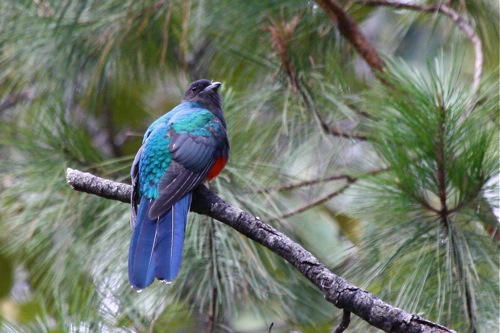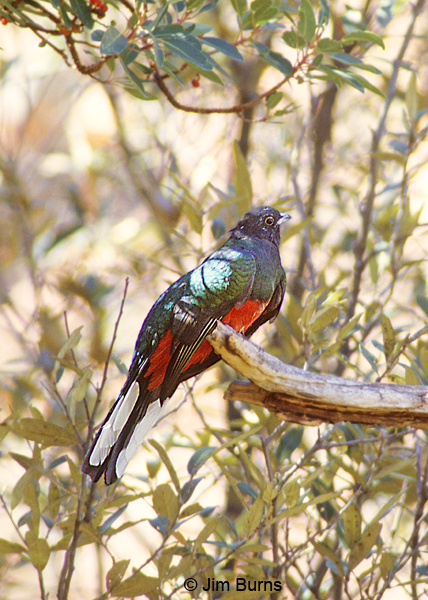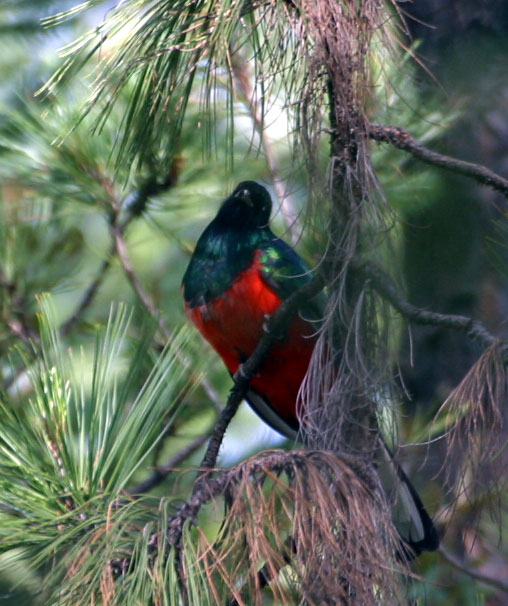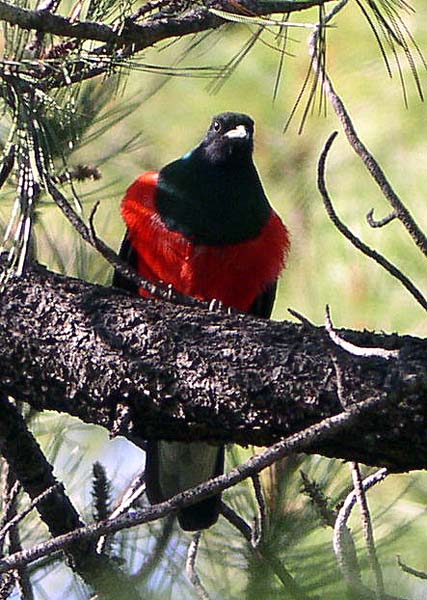
Euptilotis neoxenus
SUBFAMILY
Trogoninae
TAXONOMY
Trogon neoxenus Gould, 1838, Mexico. Monotypic.
OTHER COMMON NAMES
English: Eared trogon, welcome trogon; French: Trogon oreillard;
German: Haabьscheltrogon; Spanish: Trogуn Orejуn,
Quetzal Mexicano.
PHYSICAL CHARACTERISTICS
13–14.2 in (33–36 cm), 3.6–5.2 oz (103–149 g). Upperparts and
breast dark bronze-green, lower breast to undertail-coverts red,
uppertail dark blue-green, wings green to slaty, primaries and
three outer retrices edged in white, black head with filamentous
ear-coverts and small bill.
DISTRIBUTION
Southern Arizona to western Mexico.
HABITAT
Pine woodlands, also pine-oak and pine-evergreen forests, especially
canyons.
BEHAVIOR
Particularly mobile for a trogon; possible seasonal altitude displacement.
FEEDING ECOLOGY AND DIET
Eats insects and fruits, favoring madroсa (Arbutus arizonica).
REPRODUCTIVE BIOLOGY
Breeds June through October, nests in live or dead tree cavities.
No information on egg-laying or brood rearing.
CONSERVATION STATUS
IUCN Near Threatened. Occurs in low densities, possibly sensitive
to logging.
SIGNIFICANCE TO HUMANS
None known.
Photo Gallery of - Eared quetzal




 Animalia Life
Animalia Life